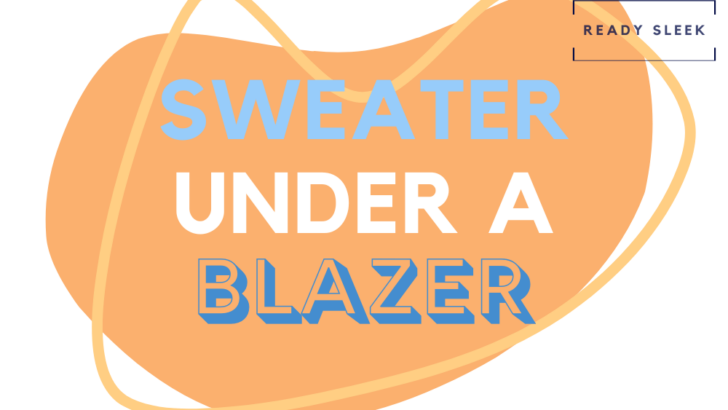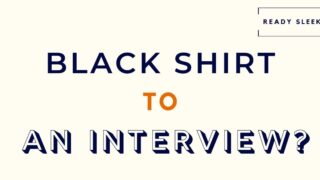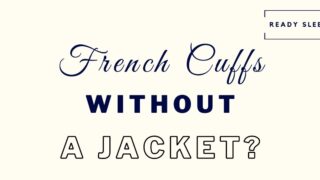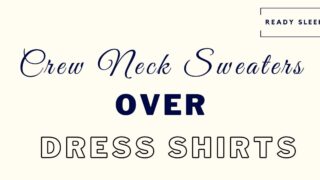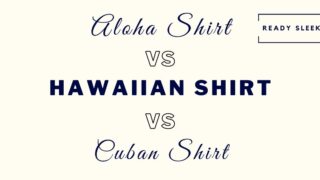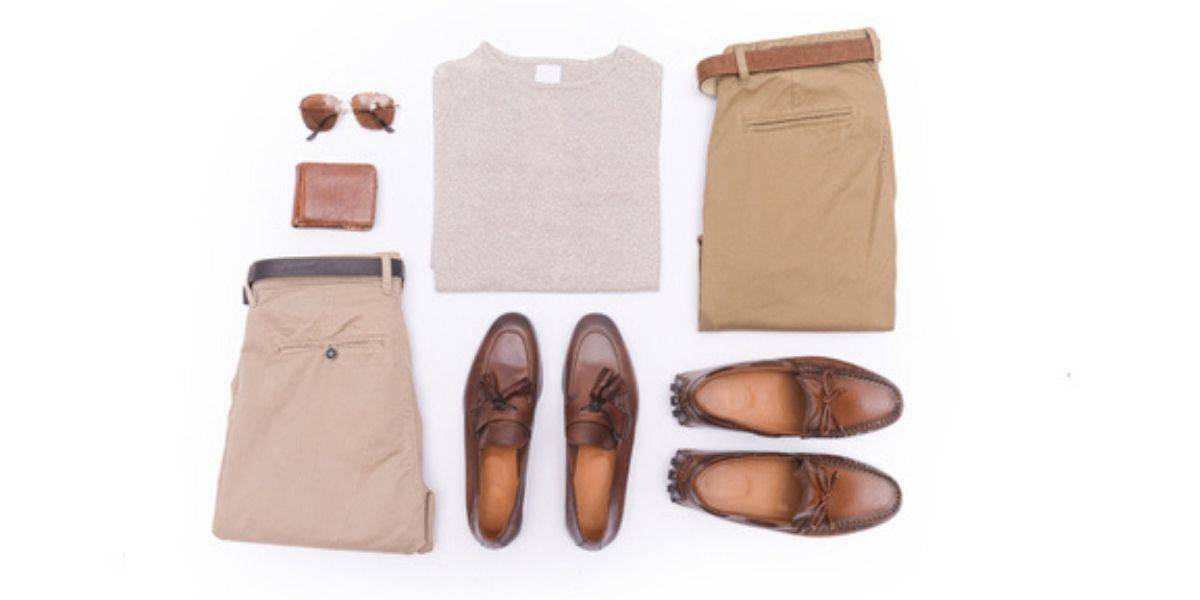Blazers are a great way to dress up a casual outfit but can sometimes be difficult to layer over knitwear. The question is, can you wear a sweater under a blazer?
It’s entirely possible to wear a sweater under a blazer, with dark and neutral-colored blazers often working best. V-neck sweaters under blazers can look great, especially with a dress shirt and tie underneath. Generally, it’s best to avoid the combination in truly formal settings.
While they’re the basics, there’s much more to it.
Let’s dig deeper.
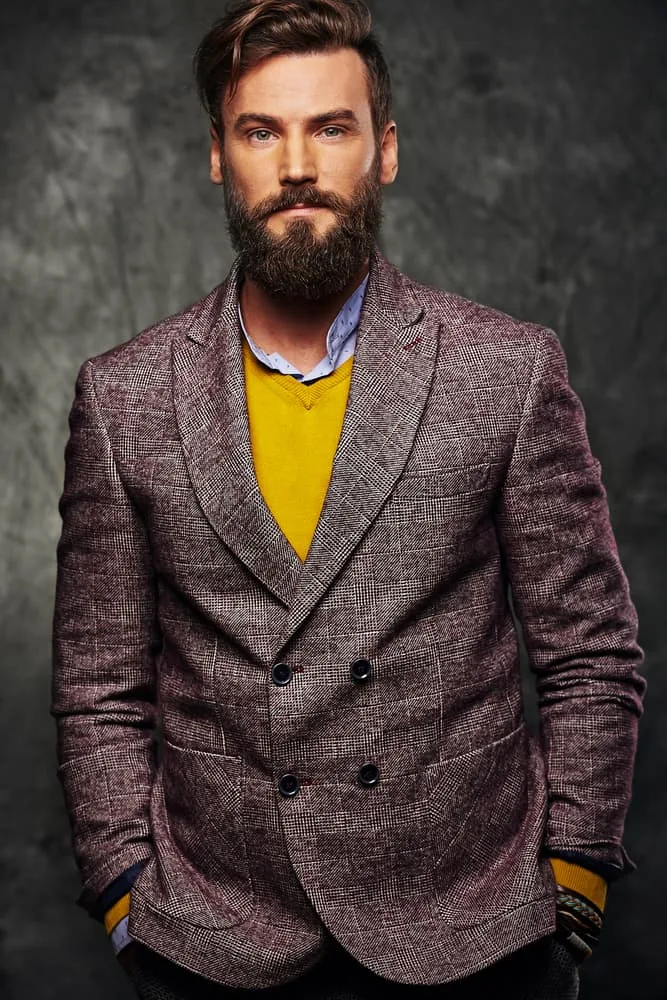
Image From Deposit Photos
6 Tips For Wearing A Sweater Under A Blazer
Here are some essential tips to help you pull off wearing a sweater under a blazer every time.
1. Ensure It’s Appropriate
Making sure your outfit is appropriate for the given scenario is essential.
Incorrectly assessing the situation’s formality can be catastrophic, as being under-dressed can come across as disrespectful.
Conversely, being overdressed can give off the wrong impression; doing so can sometimes make you appear over the top or eccentric.
Therefore, it’s important to ensure you correctly assess the formality of the scenario to which you wish to wear this outfit.
While sweaters are often worn to truly casual events, they can also be worn in smart-casual and business-casual settings. Ultimately, they’re versatile.
Blazers, on the other hand, are usually used to dress up a casual or smart-casual outfit.
They are somewhat formal but not as formal as a 2-piece suit would be. It makes them ideal for a smart-casual or business-casual setting.
Wearing a sweater under a blazer is ideal for these scenarios, but it should generally be avoided in formal settings – a 2-piece suit should be worn instead. A blazer combination of any variety simply wouldn’t cut it.
2. Go For A Dark Block-Colored Blazer
When wearing a sweater under a blazer, it’s best to go for a darker blazer.
Colors like black, charcoal, navy, and dark grey work especially well, as they go with many different colors.
Having said that, other colors can work, but you should ensure they are on the darker end of the spectrum.
Brightly colored or patterned blazers look overly flamboyant and will make you stick out like a sore thumb.
As mentioned, this combination is smart-casual or business-casual, depending on the other items you choose to wear it with. Bright colors typically don’t match this level of formality and should, therefore, be avoided.
Moreover, darker blazer colors have a much more mature, sophisticated appearance than bright colors and patterns.
This is optimal for smart-casual and business-casual situations, as an immature appearance detracts from the aesthetic.
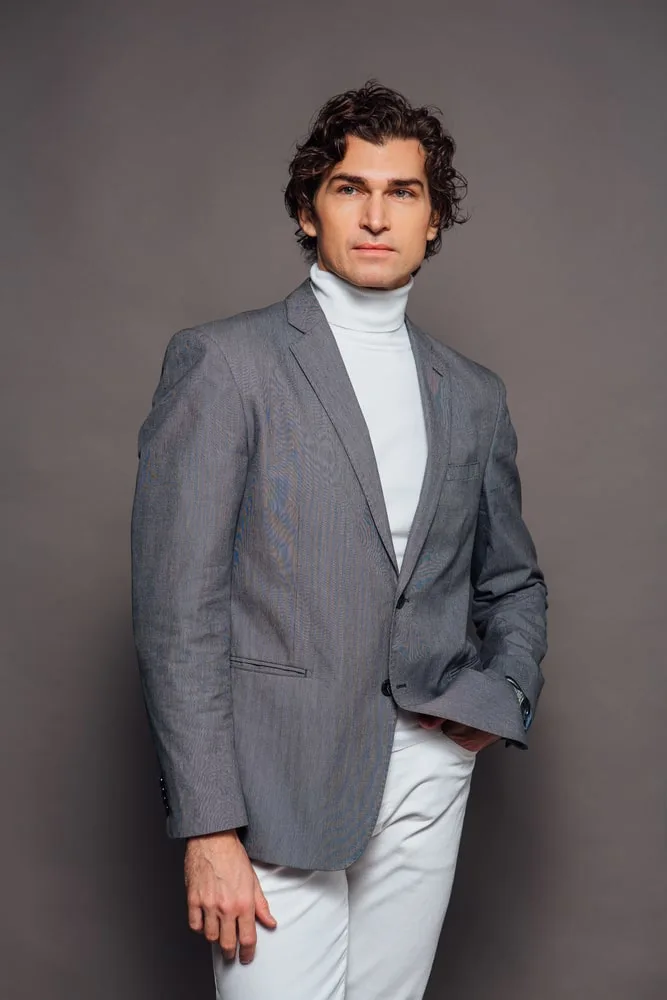
Image From Deposit Photos
3. Neutral Or Muted Colored Sweaters Work Best
While it’s been mentioned that your blazer color should be darker, it’s also important to consider the color of your sweater.
Choosing a dark blazer allows much more variety and many more possibilities regarding the color of your sweater.
Though to keep it more formal than casual, it’s best to go for neutral or muted sweater colors.
Neutral colors are those that don’t appear on the color wheel. They are incredibly versatile and go with most garments across all formality levels.
Because of this, neutral-colored sweaters are ideal for wearing underneath a blazer; grey (of any shade) looks particularly good.
However, because of the extent of a dark blazer’s versatility, most sweater colors will work well, so long as they aren’t excessively bright.
It’s recommended that you keep your sweater a lighter color or shade than that of your blazer.
In addition, if you do go for a more vivid and non-neutral sweater color, try to keep things muted overall.
So, instead of lime green – consider olive or sage green. Instead of a bright and bold shade of yellow, consider mustard yellow as an alternative.
Doing so will enhance the layered look and give the outfit more depth.
4. Think About A Button-Up Shirt
For additional formality, consider wearing a button-up shirt underneath your sweater.
The visible collar and top button subtly create an extra layer of formality.
However, when wearing a button-up shirt under a sweater and blazer, it’s important to do it the right way.
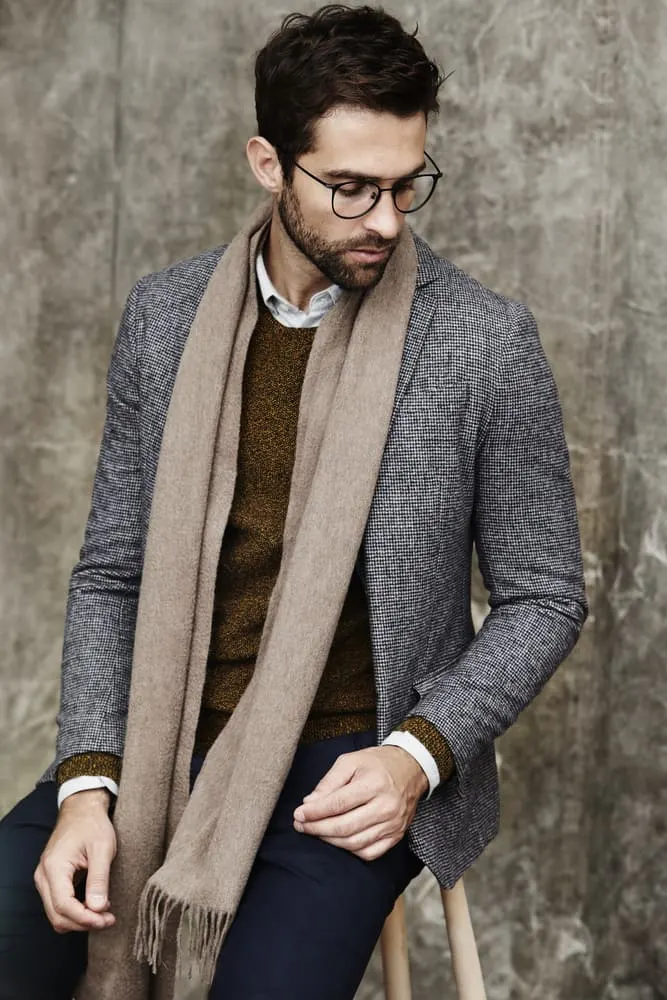
Image From Deposit Photos
Firstly, ensure your button-up is slim-fit or similar. This will reduce the risks of visible bunching or clumping of your shirt under your sweater.
When wearing a button-up underneath a sweater and blazer, it’s possible to go for a patterned button-up.
Patterned button-ups are a great way to add some personality and flair to your outfit without going overboard.
This is because the majority of the shirt won’t be visible – only the collar and the top button or two will be.
Wearing a button-up this way will add a dash of boldness to your outfit while remaining discreet overall.
Whether it’s stripes, checks, herringbone, or anything else – experimentation is always encouraged.
5. Consider Tucking In Your Sweater
Tucking in is a simple yet effective way to dress up your outfit.
It’s usually associated with formality and shows that you put effort into looking good and matching the correct formality levels.
Wearing a sweater under a blazer is no exception. In fact, it’s arguably more important than if you weren’t wearing a blazer.
The primary reason that tucking in your sweater is essential underneath a blazer is that – without doing so – the untucked sweater may be visible at the bottom of the blazer, where the buttons part.
This is a scruffy, unfinished look and should always be avoided.
Furthermore, if you need to take your blazer off for any reason, having an untucked sweater would immediately decrease the formality of your outfit.
It’s important to know that there are generally two tuck types. These are the full tuck and the French tuck.
The tuck mentioned here, and the correct tuck to use to dress up your outfit, is the full tuck.
This simply entails tucking in your shirt around the entirety of your waistline, as opposed to partially tucking it in, as is the defining factor of the French tuck.
6. Sweater Style Matters
There are many different sweater styles on the market, so many so that it can be confusing even to the most style-conscious.
However, generally, these styles can be broken down into four umbrella sweater styles.
These are the crew neck, high neck, zip, and V-neck sweaters.
Crew neck sweaters are the most common ones and are characterized by a round neckline and lack of collar.
High neck sweaters extend further at the neck than most other sweaters. This makes them easily identifiable. They include mock necks and turtlenecks.
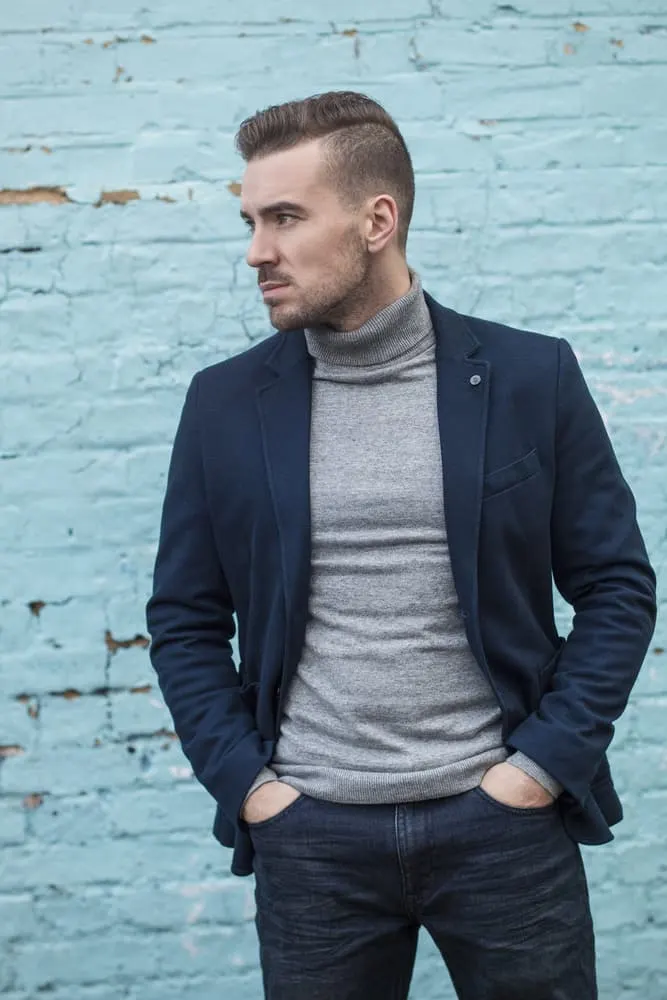
As the name suggests, zip sweaters have a zip that extends partway way down the middle of the sweater.
There are different types of zip sweaters, with the most common being the quarter-zip.
It’s called the quarter-zip because the zip extends about a quarter of the way down the sweater.
Finally, the V-neck is the dressiest of the sweaters and is also very easy to distinguish from the others.
V-neck sweaters have a V-shaped, low-cut neckline, making them fantastic for layering.
Each of these sweaters varies in formality, so you should be careful when deciding which one to wear.
Here are the different formality levels of each sweater style when worn underneath a blazer.
| Style | Dress Code |
|---|---|
| Crew Neck Sweater Under Blazer | Business-casual or smart-casual |
| High Neck Sweater Under Blazer | Smart-casual |
| Zip Sweater Under Blazer | Smart-casual |
| V-Neck Sweater Under Blazer | Business-casual or smart-casual |
It’s worth mentioning that, when wearing a V-neck, a tie is a great way to further dress up your outfit, as it’ll be partially visible. However, make sure the setting is formal enough for a necktie to make sense.
Frequently Asked Questions
Now that you know the ins and outs of wearing a sweater under a blazer, here are some frequently asked questions to clear up any queries you may have.
Can You Wear A Sweater Vest Under A Blazer?
It’s possible to wear a sweater vest under a blazer. Ensure your sweater vest is block-colored and lighter than your blazer.
Sweater vests are a pretty preppy option when it comes to garments.
They’re primarily worn as overlayers; however, they can be worn under a blazer just as well.
Treat them similarly to how you’d treat a V-neck and you’ll pull it off every time.
Can You Wear A Cardigan Under A Blazer?
Wearing a cardigan underneath a blazer is a fantastic layered look. If your cardigan is a full button-up, keep a couple of the top buttons undone. On the other hand, if you have a V-neck cardigan, do up all the buttons under the blazer.
Cardigans are fantastic layering garments. Whether you wear them as a mid-layer or outer layer, they’ll look great.
When wearing a cardigan under a blazer, ensure that there’s room at the top, keeping your shirt collar and top button visible, at the very least.
Conclusion
Wearing a sweater under a blazer is a fantastic look, and knowing how to do it is essential to any man’s style knowledge. Keep the mentioned tips in mind, and you’ll pull it off each and every time.

